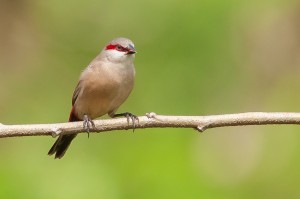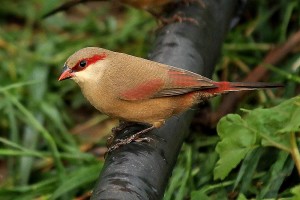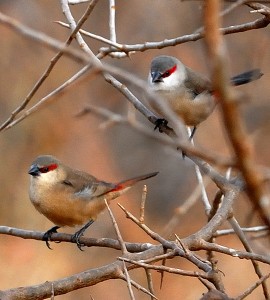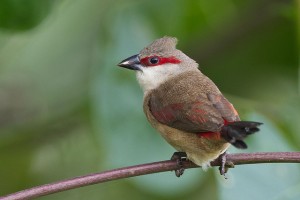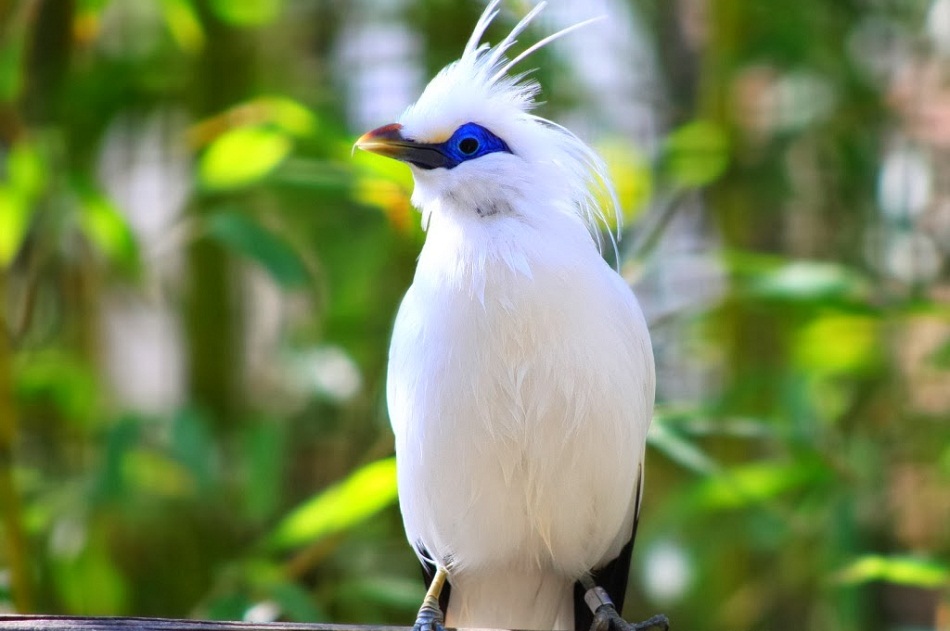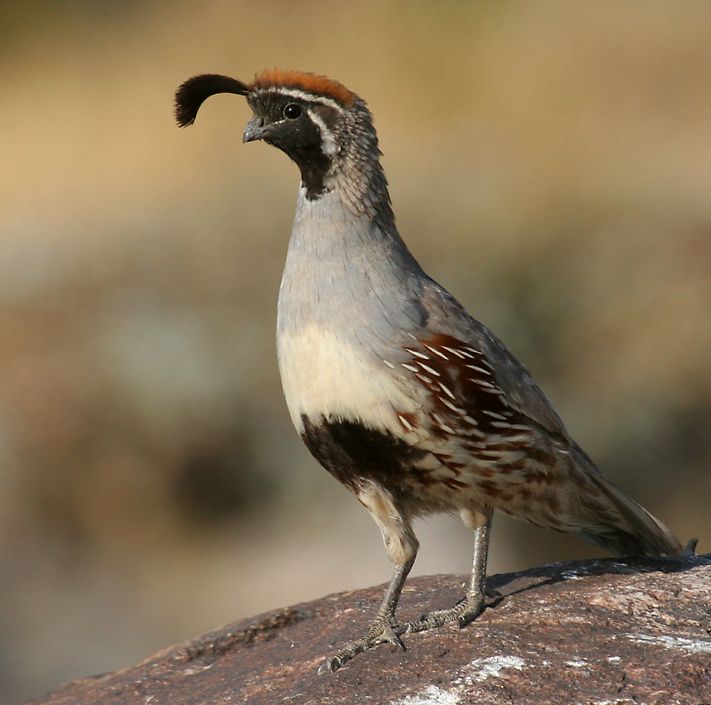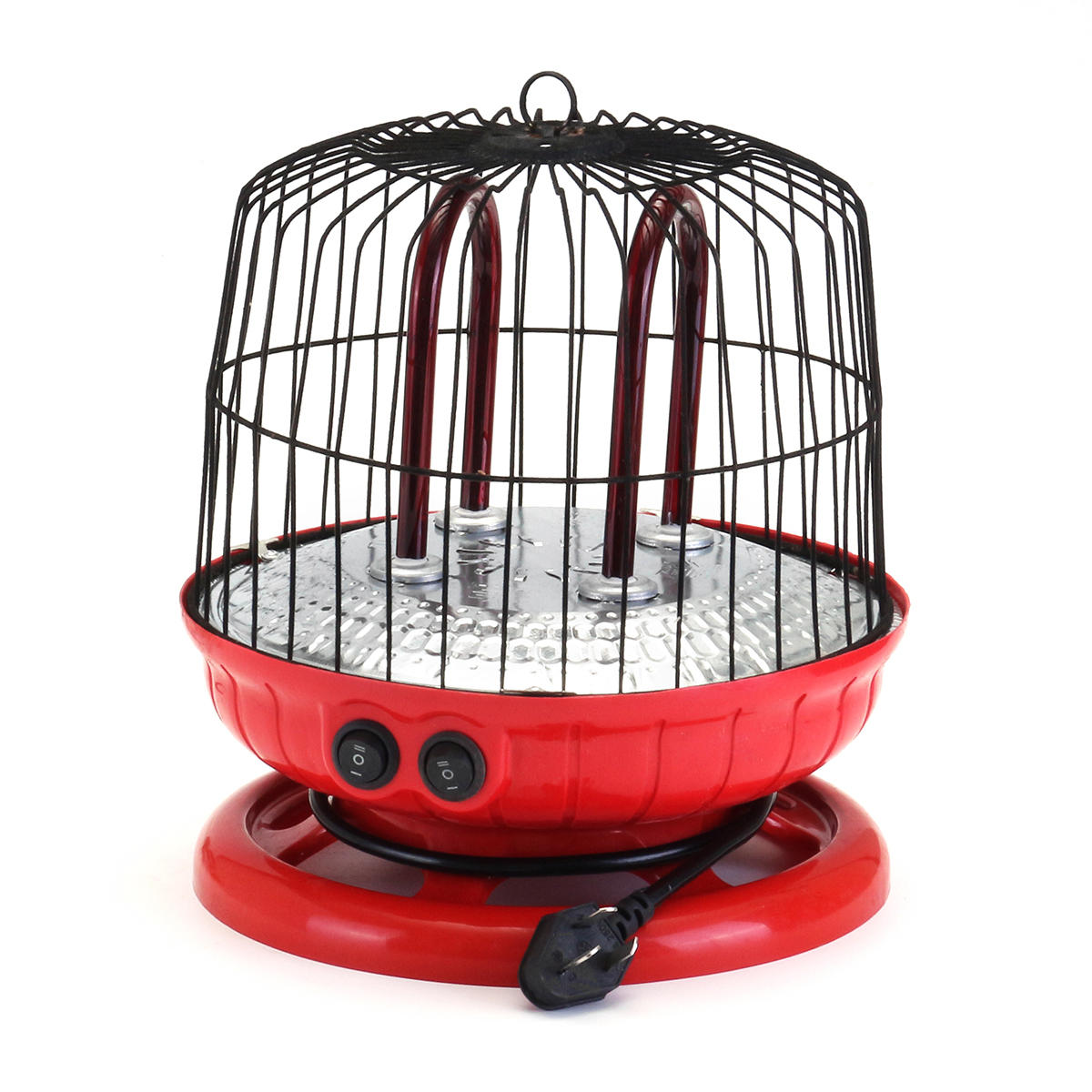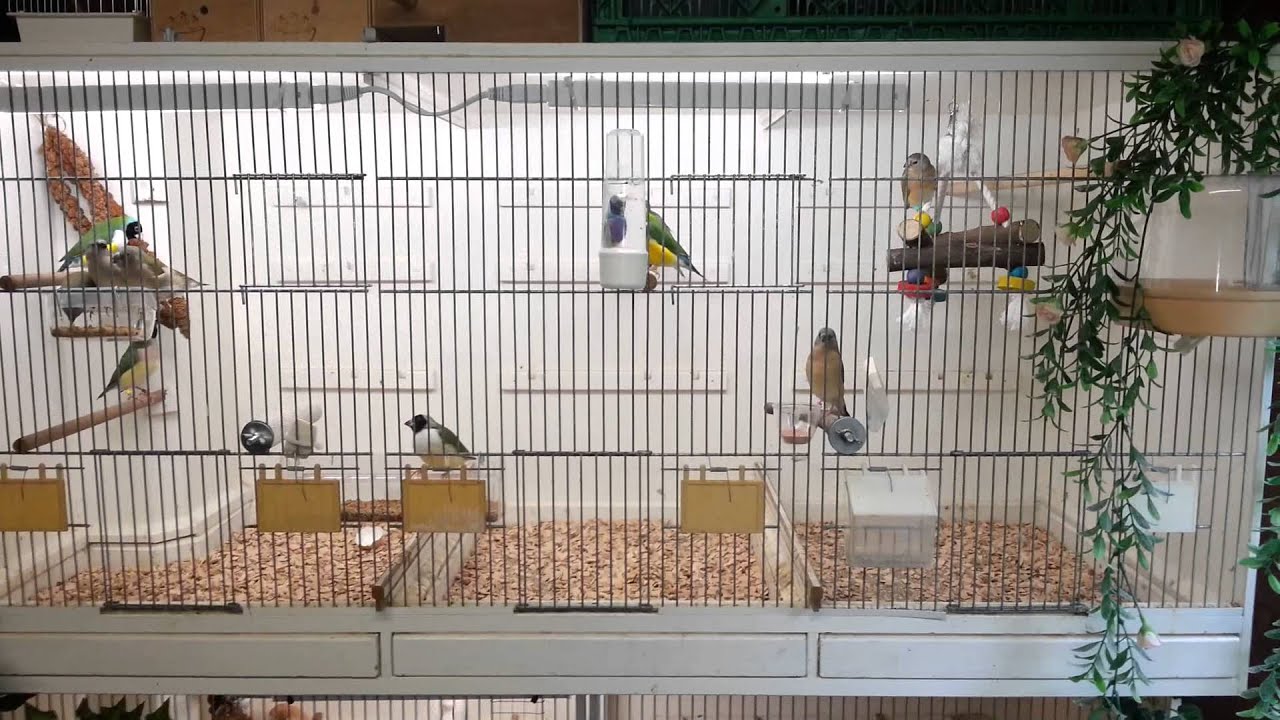The rosy-rump waxbill, also known as the crimson-rumped waxbill, rosey-winged waxbill, and Sundevall’s waxbill, belongs to the group of estrildid finch. Having a brownish-gray body and a dark bill, their eyes have crimson stripes with their feathers being marked with crimson patches. These monomorphic birds (identical males and females) are sometimes mistaken with red-ear waxbills.
Scientific Classification |
|
| Kingdom | Animalia |
| Phylum | Chordata |
| Class | Aves |
| Order | Passeriformes |
| Family | Estrildidae |
| Genus | Estrilda |
| Scientific Name | Estrilda rhodopyga |
Quick Information |
|
| Distribution | East Africa, South Africa, southern Sudan, Somalia, south-eastern Kenya, inner parts of Tanzania, north-eastern Uganda, Malawi, Egypt, The Democratic Republic of Congo. |
| Habitat | Thickets, dry marshy and bushy grasslands of Africa |
| Color | Crimson, fawn, beige, brownish-gray |
| Size | 10 cm to 12 cm |
| Wingspan | 15 cm to 16 cm |
| Weight | About 11 gm |
| Diet | Seeds and shoots of grasses |
| Egg hatching time | 12 to 14 days |
| Clutch size | 4 to 6 eggs |
| Fledging | 21 days |
| Singing Ability | No song as such but has some breeding or warning calls. |
| IUCN Conservation Status | Least Concern |
Color Mutations
- Fawn
- Red-eye striped
- Grey
- Yellowish-grey
Pet care
Housing
Large planted aviaries or spacious cages are required for these birds. A soft wooden perch would be a good option. You can also place a handmade nest or a nest box within the cage.
Substrate
To ensure cleanliness, paper substrates are to be placed at the bottom of the cage and changed on a regular basis.
Temperature
A temperature of about 70°F to 80°F is essential to keep them warm, especially during the winter months. In summer, the cages or aviaries may be placed outdoors to provide them with adequate sunlight.
Temperament
These birds dwell well when kept along with mixed species. The males are a bit aggressive with each other during the breeding period.
Feeding
Like other waxbills, these birds also feed well on seed mix comprising of seed grasses as well as millets. Being insectivorous, wax worms, fruit fly larva as well as mealworms can be included as a part of their diet. They should also be provided with chickweed, spinach, lettuce, broccoli tops, egg food and carrot tops. Supplying them with grit and cuttlebone ensures a good amount of calcium and vitamins. Moreover, clean water is to be provided at the bottom of the cage daily.
Care
They should be provided with bathing water daily, while their nails should also be regularly trimmed and cleaned.
Health problems
Though no specific health problem is known, common problems like air-sac mite and egg-binding may affect them if proper care is not taken.
Interesting facts
- Carl Sundevall, a Swedish ornithologist, was the first to have described this bird in 1850.
- The juvenile birds have a duller look than their parents, also lacking the red stripes on their eyes.
References:
- http://en.wikipedia.org/wiki/Crimson-rumped_waxbill
- https://beautyofbirds.com/crimson-rumped-waxbill/
- http://datazone.birdlife.org/species/factsheet/8653
- https://beautyofbirds.com/crimson-rumped-waxbill/
- http://www.hbw.com/species/crimson-rumped-waxbill-estrilda-rhodopyga
- http://planetbirds.blogspot.in/2011/06/red-rumped-waxbill.html
- http://www.nfss.org/education/articles/differentiating-the-red-eye-striped-waxbills/


